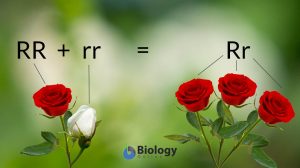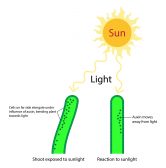Definition
noun
A biochemical process where a glycan attaches to a protein, a lipid, or other organic molecule, especially through the catalytic action of certain enzymes
Supplement
In general, glycosylation is a chemical reaction where a carbohydrate (a glycosyl donor) is attached to the hydroxyl or other functional group of a glycosyl acceptor. In biochemistry, glycosylation refers to the process wherein a carbohydrate (referred to as glycan) and other organic molecules are combined through the aid of certain enzymes.
Carbohydrates are one of the major biomolecules found within the cell. Other major biomolecules are proteins, lipids, and nucleic acids (e.g. DNA and RNA). Many of these carbohydrates occur as complex compounds that are covalently linked to another biomolecule through glycosylation. They are referred to as glycoconjugates. The carbohydrate component is called glycan. Examples of glycoconjugates are glycolipids and glycoproteins. A glycolipid is a glycan bound to a lipid whereas a glycoprotein is a glycan bound to a protein.
The step-by-step processes of glycosylation vary, depending on the form of glycosylation. For instance, N-linked glycosylation is a form of glycosylation where the glycan is attached to a nitrogen atom of asparagine or arginine residue of a protein. In eukaryotes, it occurs in the lumen of the endoplasmic reticulum. O-linked glycosylation is a process where O-linked glycans attach to the hydroxyl oxygen of serine, threonine, tyrosine, hydroxylysine, or hydroxyproline side chains of a protein. It may also be the process where the O-linked glycans attach to the oxygen on lipids. In eukaryotes, this form of glycosylation occurs in the Golgi apparatus. In C-linked glyosylation, the C-linked glycan (a mannose sugar) attaches to the carbon on a tryptophan side-chain.
Apart from the N-glycosylation and the O-glycosylation as the most common forms of glycosylation, other forms include:
- P-glycosylation, wherein the glycan is attached to the phosphorus on a phosphoserine
- C-glycosylation, wherein the glycan is attached to carbon, such as in mannose to tryptophan
- S-glycosylation, wherein beta- N-Acetylglucosamine is attached to the sulfur atom of cysteine
In general, glycosylation occurs in the cytoplasm of eukaryotes and prokaryotes. In eukaryotes though, it may also occur in the nucleus (in particular, O-GlcNAc modification). In the cytoplasm of eukaryotes, the endoplasmic reticulum and the Golgi apparatus are the sites of glycosylation.
Golgi apparatus, in particular, packages molecules, such as glycoproteins, for secretion. During post-translational and co-translational modification, the Golgi apparatus modifies certain proteins synthesized from the rough endoplasmic reticulum. A sugar unit is added to the protein through glycosylation. The resulting glycoprotein may be stored within a vesicle, or later transported outside the cell.
Glycosylation is an essential biochemical process. It promotes proper protein folding and produces complex molecules that carry out regulatory functions.
Glycosylation is different from glycation, which is a non-enzymatic chemical reaction. Hyperglycosylation refers to the condition characterized by excessive glycosylation.
See also:
- carbohydrate
- glycolipid
- glycoprotein







